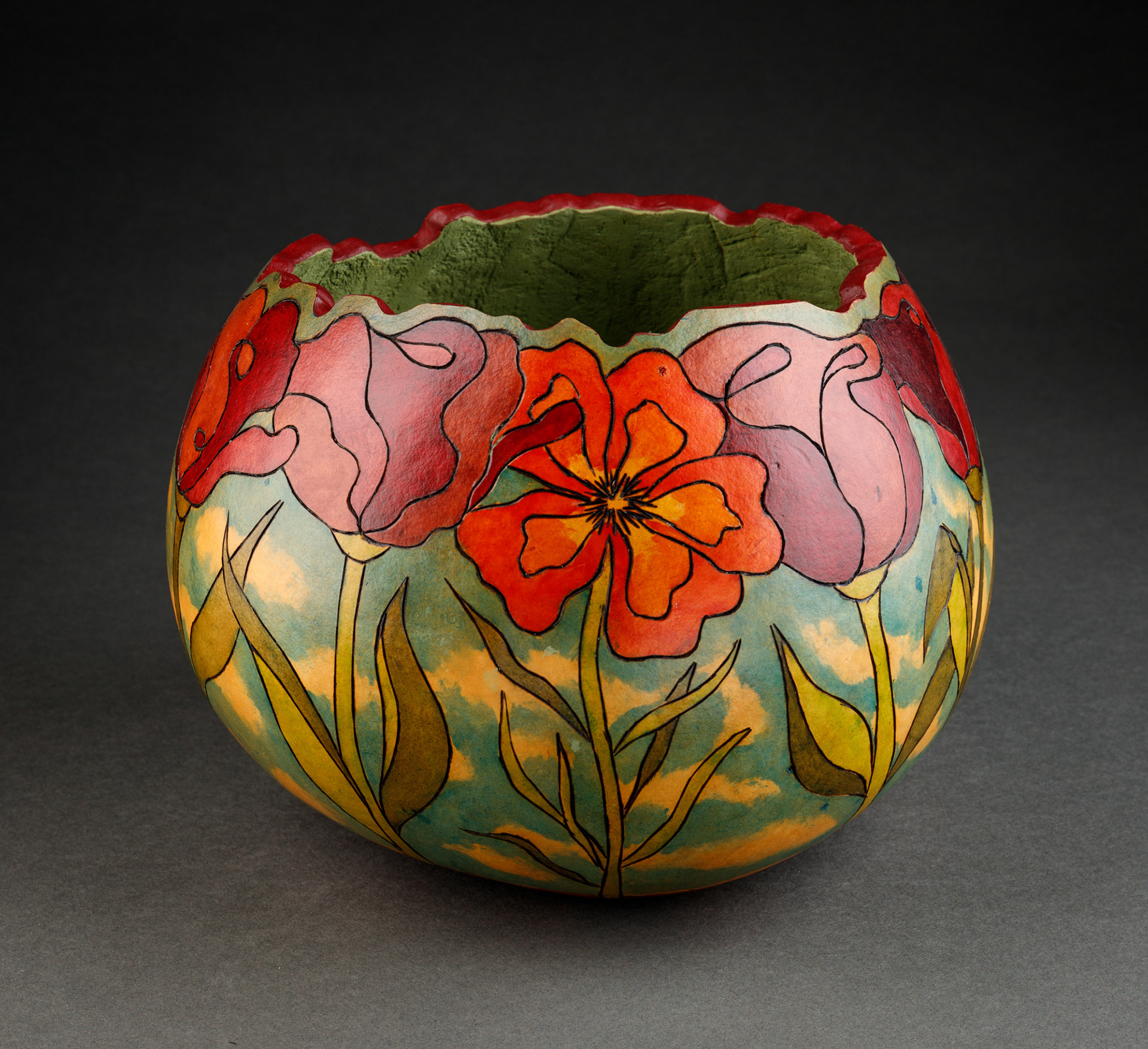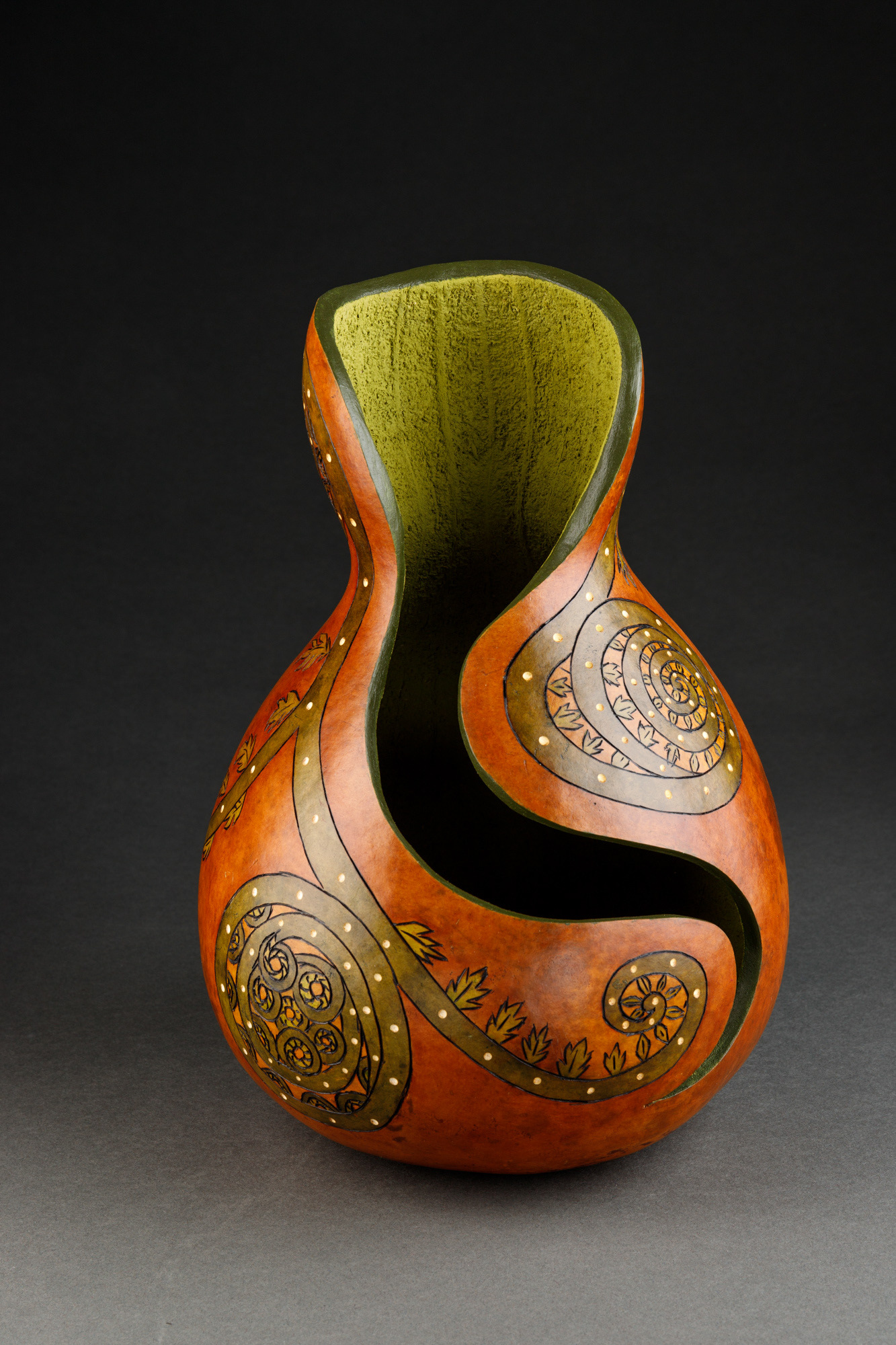
Afternoon Splendor, Gourd Art, 2024

Recovery, Gourd Art, 2024

Emerge, Gourd Art, 2024
As an avid gardener I can get a little melancholy as another winter approaches, knowing there’s a cold, long wait for another spring. But I know the bulbs I plant in the fall will be okay even during the most brutal winters. They may be semi-dormant, but are busy with chemical reactions to lower the freeze temperatures which prevents damage to the bulb and small leaf structures within. The cold is actually needed for the bulbs to form flowers in the spring.
After a colorful display and the leaves drop, trees survive winters with their bark and by sealing themselves against the elements, cutting off nutrients and reducing water loss. This starts the dormancy stage, consolidating resources more to the roots. Even during dormancy trees will produce new buds, called dormant buds. And again in the spring, there will be a ‘bud burst’ signaling the beginning of a new growing season.
After a colorful display and the leaves drop, trees survive winters with their bark and by sealing themselves against the elements, cutting off nutrients and reducing water loss. This starts the dormancy stage, consolidating resources more to the roots. Even during dormancy trees will produce new buds, called dormant buds. And again in the spring, there will be a ‘bud burst’ signaling the beginning of a new growing season.
Ferns, too, go through a dormant stage and save their energy as they wait for the soil to warm and the rains to come. They then peek out their little fiddle heads to welcome spring.
And all holding space for new beginnings…
Kristen Treuting, November 2024
Kristen Treuting, November 2024
kristen.treuting@gmail.com
http://www.kristensgourdcreations.com/
